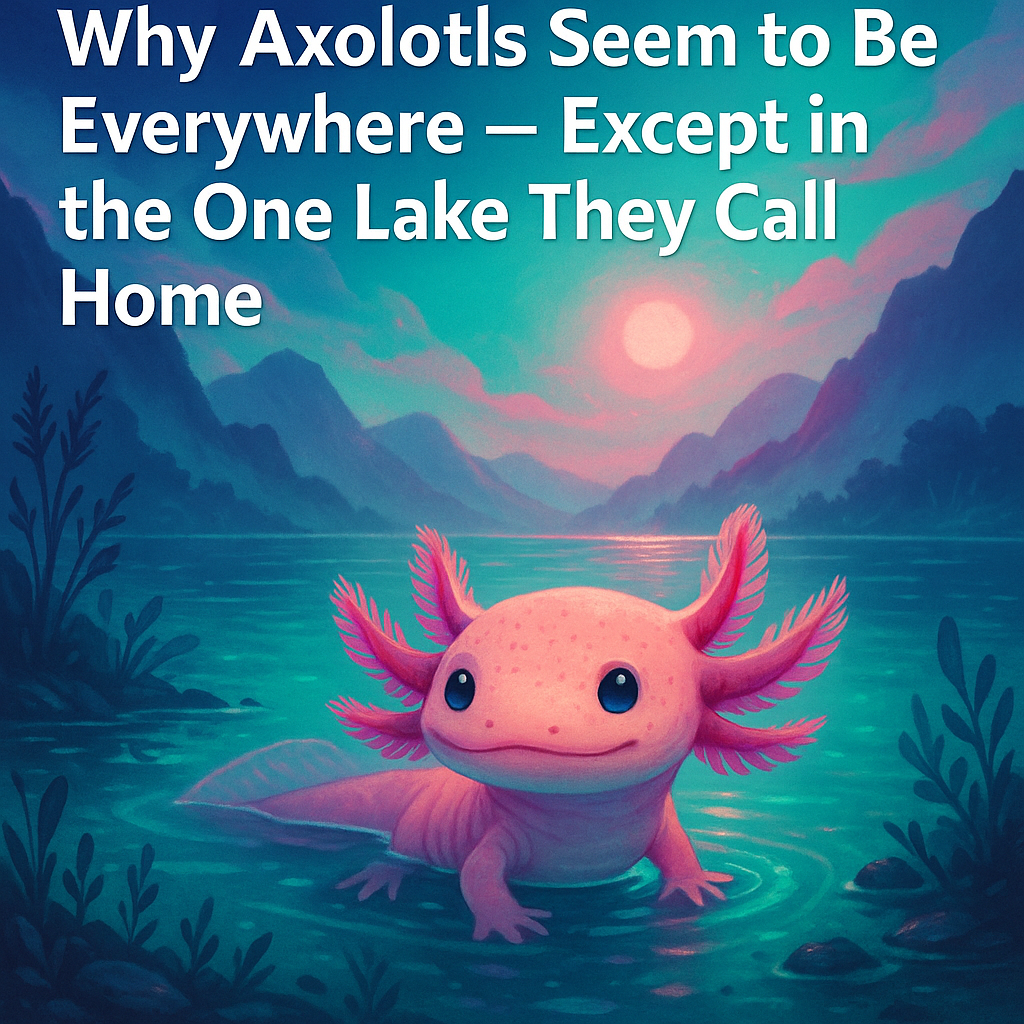Axolotls have quietly become internet darlings. Their curious smile, feathery gills, and almost cartoonish appearance make them a perfect fit for memes, TikTok videos, and plush toys. You can buy axolotl stickers, find them in video games, or even adopt one from a breeder.
But here’s the paradox: while axolotls seem to be everywhere in popular culture and pet shops, they’re alarmingly rare in their only natural habitat — Lake Xochimilco, on the edge of Mexico City.
So, how did these so-called “Mexican walking fish” become household icons while teetering on the brink of extinction in the wild? Let’s dig in.
A Species That Refused to Grow Up
Axolotls are a type of salamander with a twist — they never fully metamorphose into land-dwelling adults. Instead, they keep their juvenile features, like external gills, for their entire lives. This biological quirk, called neoteny, makes them a favorite subject of scientific study.
Researchers love axolotls for another reason, too: their regenerative abilities. Lose a limb, a chunk of their heart, or even part of their brain, and they can grow it back. It’s no wonder labs around the world raise axolotls to study regeneration and tissue repair.
This scientific demand, coupled with their quirky looks, has cemented axolotls in culture. They’re simultaneously pets, research subjects, and pop icons.
The Vanishing Waters of Lake Xochimilco
The wild story, however, is less cheerful. Lake Xochimilco, the axolotl’s only home, is shrinking. Once part of a vast network of lakes surrounding Mexico City, Xochimilco today survives as a patchwork of canals and wetlands. Urban sprawl, pollution, and water diversion have dramatically reduced its size and health.
What remains is under constant pressure. Raw sewage, agricultural chemicals, and invasive species like tilapia and carp have transformed the once-rich ecosystem into hostile waters. These invasive fish compete with axolotls for food and sometimes eat their eggs, slashing survival rates.
The result? In the wild, axolotls are critically endangered. Surveys have found fewer than 50 individuals per square kilometer in Xochimilco — a drastic drop from decades ago.
Why Captivity Thrives While the Wild Struggles
Here’s the irony: axolotls may be safer in tanks than in their natural waters. Because they’re hardy, easy to breed, and endlessly fascinating, axolotls are raised in labs, aquariums, and by hobbyists across the globe.
This captive boom ensures the species doesn’t disappear altogether, but it also creates a strange disconnect. Millions of people may see axolotls every day on their feeds or in pet shops, yet very few wild axolotls remain in the place that gave them their name.
It’s a survival split — abundant in culture, endangered in nature.
The Battle to Save Their Home
Conservationists aren’t giving up. Projects in Xochimilco are restoring chinampas — ancient floating gardens — in ways that benefit both farmers and axolotls. By reducing chemical use and improving water flow, these efforts aim to create safe microhabitats where axolotls can thrive.
Some researchers are also exploring “rewilding,” reintroducing captive-bred axolotls back into cleaned-up sections of the canals. Progress is slow, but it’s a hopeful path forward.
Still, the challenge is steep. Saving axolotls requires balancing Mexico City’s water needs, protecting wetlands, and controlling invasive species — all while supporting local communities.
Why Axolotls Matter Beyond the Meme
It’s tempting to see axolotls only as cute faces on screens, but they’re more than internet mascots. They’re ecological indicators — their decline signals deeper issues in Mexico’s freshwater systems. Protecting them means protecting clean water, biodiversity, and cultural heritage.
And maybe that’s why their popularity matters. If the millions who adore axolotls in video games or pet shops connect that love to real conservation work, the species stands a chance to flourish again in Lake Xochimilco.
For now, axolotls may be everywhere in our digital lives but rare in the lake that shaped their identity. Their story reminds us that admiration alone isn’t enough — survival depends on restoring the waters that once defined them.


